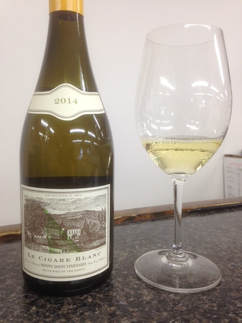 First day of actual Spring-like weather today (actually during Spring) as well as the most American sign of Spring (Opening Day of the Major League Baseball season) all but requires us to present a domestic made white wine. Which of course we have in abundance. For fun we chose a wine that pokes the most fun at the French and their wine, while at the same time pays respect to their history and greatness. Bonny Doon Winery is one of the great old guards of the 'Rhone Ranger' movement in California, among the first to plant and promote the Rhone varieties over more marketable grapes like Chardonnay, Cabernet Sauvignon, or Pinot Noir. Since their inception the top red and white wines were built to emulate those of Chateauneuf-du-Pape, using the varieties made famous in those blends. The names of 'Cigare Volant' and 'Cigare Blanc', however, call to memory one of the most comedic moments in wine history. After the sighting of a UFO in Northern France in 1954 (described as a 'cigare volant' or 'flying cigar' based on its alleged shape), the mayor of Chateauneuf-du-Pape wrote a decree that it was against the law for UFOs to land in their vineyards. That's right, the area best known for producing the first code of standards for its vineyards (later to become the basis of the French AOC system, leading to CNDP becoming the first AOC) put a law on the books to outlaw aliens. Anyway, back to the wine created in honor of that inauspicious event. Built from primarily Grenache Blanc and Roussanne from the Beeswax Vineyard in Arroyo Seco (remember the name for the April Select Six) the aromas are full of melon, wildflowers and waxy white fruits. The exotic notes of the Roussanne come out more and more as the wine opens up, more exotic teas and lavender, really perfumed and beautiful without sweetness. The palate is rounded and -again- waxy with only the slightest hints of barrel in the background, with lots of melon skin tannins behind the rich stone fruits and almost creamy lemon curd notes. A beautiful wine to marry up to a richly textured dish when you don't want the oaky/barrely aspects of Californian Chardonnay.
0 Comments
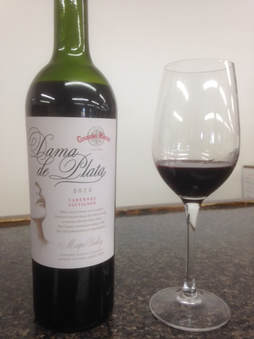 Chile's wine making traditions are rooted in European influence, initially by the Spanish as a colony in the 1500s and 1600s, and by the French in the 1800s after their independence. Bordeaux has been a particularly strong influence, key to developing the growing of those varieties in the Maipo Valley and influencing the wine style. After the phylloxera blight struck Europe in the late 1800s many winemakers in Bordeaux made the move to Chile to continue working. Even today the wine from Chile is more similar in style to Bordeaux than Argentina, following the earthier and more structured template of the French wines. Cousino Macul is among the oldest wineries in Chile, continuously owned by one family since its inception in1856, and honor their founder Isadora Goyenechea, one of the earliest female influences in the wine industry and certainly within Chile. While many Chilean Cabernets (and Bordeaux, especially in the lesser vintages) can suffer from under-ripe green pepper tones that plague the inexpensive wines, this is pure currants and dark earthy fruits with the richness and intensity of a barrel sample from a fine Medoc Chateau. The palate is equally rich and intensive, plush and well structured with firm drying tannins and a pop of needed acidity to pull out some brighter cranberry and red fruit flavors that add length of finish and surprising complexity. This has loads of Old World pleasure and still has plenty of immediate approachability, and a great wine to bring to the dinner table. 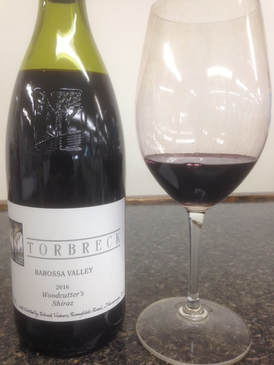 Lost in the over-saturation of the Australian wine market with cutsie names and 'critter labels' were a lot of wineries with great identity and a respect for the older vineyards that are Australia's heritage. Torbreck is very much one of those wineries, build over time by a vineyard manager cobbling together great properties until his own label was possible nearly 25 years ago. Since then the winery has grown from leasing many of these properties to owning them outright, becoming custodians for some of the Barossa's most important vineyards. Their mission is very similar to some of our favorite Californian wineries, like Bedrock Wine Co., who preserve the ancient Zinfandel and 'field blend' vineyards across the state. The history of the site is an important part of the wine made, knowing who owned the vines and tended to them over multiple generations. The Woodcutter's series is their value line of red and white wine, built from a selection younger sites and replanted parcels, but is no less serious than the rest of their lineup. Deep and dark in color, the aromatics are intensive but not sappy and sugary as lesser Aussie wines often can get, full of currants and black fruits as well as dark savory spices and hints of cured meats. The palate is equally intensive, but contains elements often lost in Shiraz: acidity, subtlety, even a brightness to the texture. The dark meaty flavors fill the mouth but don't stick to it like a syrup. While definitely richer than a Crozes-Hermitage, this is a wine that definitely takes great inspiration from those wines and doesn't loose the character of the grape in the desire to 'super-size' the fruit or alcohol. This wine also has a history of aging/evolving several years or more with ease, something we would almost never recommend for an Aussie at this range. 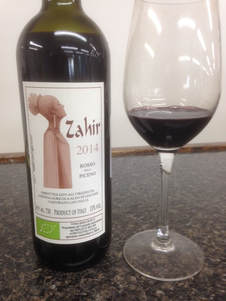 The Marches region of Italy is the bread basket of their wine industry, known mostly for producing large volumes of everyday easy drinking wine. Being off the major tourist trails through Venice, Florence, and Rome means there isn't a lot of international attention to the small towns along the Adriatic coastline,and their wines as well. Thankfully importers are exploring the region more and more to find undiscovered gems like this. Though a relatively newly formed winery, the di Giacomi winery began by purchasing old vineyard parcels beaten up by decades of mass production, and spending several years revitalizing them with Biodynamic vineyard practices. Since their first vintage in 2007 the winery has been a leader in natural vineyard practices for the region and has helped bring more attention to smaller producers and their success amid the larger companies. Built from Sangiovese and Montepulciano aged in a mix of new and used barrels, the wine is a lot darker in the glass than most would expect from an Italian wines, and an intense aroma of dark fruits and leafy soil. The use of native yeasts also brings out a gamey note that calls to mind the exotic cured meats in an Italian butcher's shop, which incidentally is EXACTLY the type of food this wine is built for. On the palate the texture is a lot rounder than a Chianti, showing less acidity, a chocolate-y dark fruit and powdery tannins. A great wine for hearty dishes and the perfect thing to get you out of the reflexive 'buy Tuscany' rut. 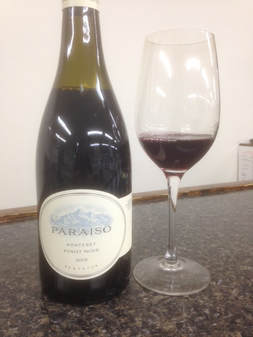 Sometimes Californian Pinot Noir can be whipping boy for the ills of the wine world. After the popularity of the movie 'Sideways' it was looked at as overly pretentious, overpriced for such a subtle wine, and blamed for hundreds if not thousands of acres of Merlot getting replanted (watch the movie if you don't remember the reference). In recent years the pendulum has swung in the other direction, turning into a mischaracterized buzz word for fruity, simple wines that taste a lot more like Syrah and Zinfandel than they used to. Somewhere in between sits the truth, that Californian Pinot are distinctive and delicious and well worth the price, you just have to look a little harder to to find them. Paraiso Vineyards was among the very first to plant vines in the Santa Lucia Highlands in Monterey, considered one of the most important Pinot Noir regions in the state because of the fog influence and cool climate off Monterey Bay. The Pinot from here will never be mistaken for French Burgundy, nor should it, for it shows off a distinct signature that is everything good about Cali Pinot. A deep color in the glass for Pinot, the aromas are equally deep and serious with lots of dark red and black fruits, as well as some toast and spice from the oak used. The fruit has sweetness on the nose, but the mouth is much more structured and serious, with vibrant acidity across the palate and fine dark tannins. The distinctly Pinot texture is perfectly polished, not a hard edge to be found in the bottle, but shows off mostly spice and savory notes over the juicier fruits found in the aromas, and the complexity builds for hours. Perhaps most importantly, this is a wine that does not try too hard to be profound, like the abundance of single vineyard Pinot Noirs out there. The deliciousness of the vintage definitely helps this drink well above its impressive price point. |
The Best of the Best.We offering free tastings on these wines in the store every Thursday and Friday, and a 10% discount off the retail price through the duration of the day. Come on by and give them a try! Archives
July 2024
Categories |
Location |
|

 RSS Feed
RSS Feed